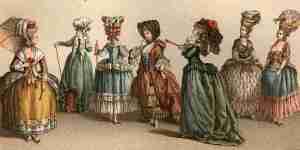
This is a guest post by Paul McMenemy, one of IHR Digital’s winter interns from the University of Leicester.
Amanda Goodrich argues that historians’ use of the term “aristocracy”, applied to the eighteenth century, has often been anachronistic and careless. Combining quantitative methods with close reading of eighteenth and nineteenth century works, Dr Goodrich charts changes in both the prevalence and the meaning of the word. “Aristocracy” began the eighteenth century as a technical term describing a specific system of government – of more relevance in relation to Greek history than to contemporary British politics; when one wished to describe the upper echelons of society, one used the term “nobility”, used for the purpose since the medieval period. Through extensive interrogation of a number of databases, Dr Goodrich shows that “nobility” remains the general usage throughout the period covered; however, instances of the use of the term “aristocracy” and its cognates do increase towards the end of the eighteenth century and into the nineteenth.
This increase is due, Dr Goodrich contends, to the way in which “aristocracy” came to be used. At no point was it synonymous to “nobility”, as it generally is now, and as it is often in the usage of historians. It ceased to be a neutral descriptor, and became first a narrowly political term – indicative of a cabal – which gradually broadened, especially after the French Revolution, to become a social term associated with decadence, exploitation and parasitism, before swinging back towards the meaning it holds today. Dr Goodrich states that “nobility”, meanwhile, remained neutral; I would argue that, semantically, the fact that “noble” is absolutely not a value-neutral term is the reason why it could not be used for these new, mainly pejorative characterisations of the ruling class. An example may be found in the case of “natural aristocracy” – one of the few positive instances of the term’s use Dr Goodrich attests, and one which she acknowledges was not in very wide use: it is tempting to say that Jefferson’s “natural aristocrat” is merely the far more popular “noble savage” given a degree and a suit of clothes. While “nobility”’s very non-neutrality helps it maintain its place as the default description, “aristocracy”’s semantic neutrality (no doubt assisted by its foreign origin) makes it the perfect blank slate on which to write the insults many writers felt the ruling class was due.
However, as Dr Goodrich explains, language is never as straightforward as all that. During the late eighteenth and early nineteenth centuries a number of different definitions and interpretations of “aristocracy” co-existed; by examining a number of texts – newspapers, journals, letters, fiction and the polemical work of Paine, Cobbett and others – she analyses these different meanings. This method of close reading contrasts with the quantitative methods employed during the first part of the lecture, and Dr Goodrich concludes by questioning the “digital turn” and the way in which digitisation, data-mining, etc. affect the historian’s understanding and use of his materials. A database may become a homogeneous mass of searchable data, rather than a collection of discrete texts, which cannot help but alter the historian’s perception. The exhaustive and no doubt exhausting searches Dr Goodrich has performed on the databases provide us with new knowledge about eighteenth century terminology, but digitisation may also lead to a new canonicity in which works outside the canon – works which have not been digitised – are far more lost than non-canonical sources of the past.
